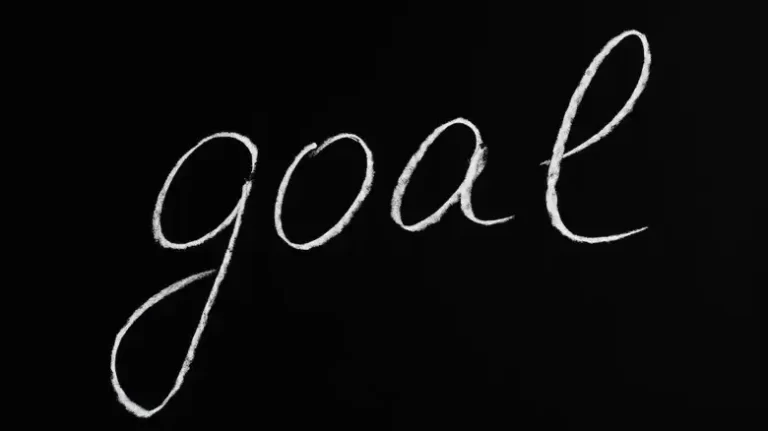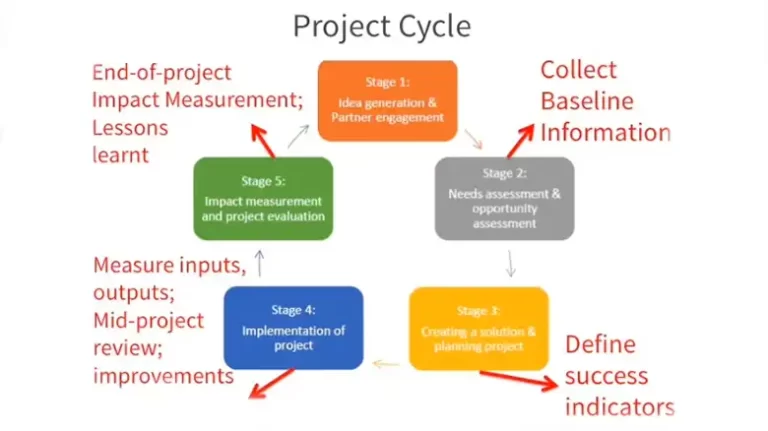Project 50 vs 75 Hard To Complete
Embarking on a fitness journey is often a transformative experience, and two challenges that have gained significant attention are Project 50 and 75 Hard.
In this article, we’ll delve into the nuances of each, examining the mental fortitude required, the physical demands, nutritional considerations, and how well these challenges adapt to diverse lifestyles.

Mental Toughness in Project 50
In the realm of fitness challenges, mental toughness is often the linchpin that distinguishes the transformative from the mundane. Let’s delve into the specifics of Project 50’s approach to mental resilience and how it compares to the robust mental fortitude required by the 75 Hard challenge.
Understanding Project 50’s Cognitive Challenges
Project 50, beyond being a physical undertaking, is a test of mental mettle. Participants commit to a structured regimen that extends beyond the physical realm, immersing themselves in intellectual pursuits.
Imagine dedicating time each day to substantial reading, navigating through diverse topics, and then steering your focus into the waters of mindful meditation.
Project 50 challenges your intellect, encouraging participants to embrace the cognitive benefits that a disciplined reading routine can offer. It’s a nuanced blend of mental exercises, designed to stimulate the mind and cultivate a robust mental framework.
Comparative Analysis with 75 Hard’s Mental Resilience Program
Contrasting Project 50 with its counterpart, 75 Hard, reveals fascinating differences in their approach to mental toughness. While Project 50 leans on intellectual stimulation through reading and meditation, 75 Hard adopts a multifaceted mental resilience program.
75 Hard pushes participants to confront discomfort daily, fostering mental toughness through a combination of physical challenges, daily affirmations, and the cultivation of a resilient mindset.
It’s a comprehensive approach, aiming to develop mental fortitude not just in the face of literature but also in the crucible of everyday life.
The Blend of Discipline and Cognitive Growth in Project 50
Project 50’s emphasis on mental toughness extends beyond mere challenges; it’s about instilling discipline and fostering cognitive growth. The structured reading and meditation components act as catalysts, enhancing not just physical endurance but also intellectual acuity.
In the crucible of Project 50, participants forge a mindset that transcends the 50-day challenge, impacting their approach to problem-solving, focus, and overall mental well-being. It’s a journey that reshapes not just the body but the very fabric of one’s thinking.
Physical Fitness Requirements
In the pursuit of a healthier lifestyle, understanding the physical fitness requirements of challenges like Project 50 and 75 Hard becomes paramount. Let’s unravel the nuances of each, shedding light on the workouts that shape these challenges and the impact they have on your journey to fitness.
Project 50’s Approach to Physical Fitness
Project 50 is not just about numbers on a scale; it’s about cultivating a comprehensive sense of well-being. The physical fitness aspect of Project 50 revolves around customization.
Participants have the flexibility to tailor their workouts to align with their preferences and capabilities. The blend of cardio and strength training forms the foundation, ensuring a holistic approach to physical fitness.
In essence, envision a fitness routine that adapts to you. Whether you prefer the rhythmic pulse of cardio exercises or the empowering challenge of strength training, Project 50 accommodates, recognizing that individual preferences play a crucial role in sustaining long-term commitment.
The Rigorous Standards of 75 Hard
On the contrasting end lies 75 Hard, a challenge synonymous with its stringent physical requirements. The challenge mandates a daily commitment to workouts, leaving no room for negotiation.
It’s not just about breaking a sweat; it’s about doing so consistently. Moreover, 75 Hard takes a step further by emphasizing outdoor exercise, fostering a connection between physical exertion and the rejuvenating embrace of nature.
Picture yourself engaging in a daily routine that not only transforms your body but also immerses you in the invigorating outdoors. It’s a deliberate choice to amplify the physical challenge, pushing participants to explore their limits beyond the confines of a gym.
Comparing the Impact on Fitness Goals
In comparing these two approaches, one must consider personal fitness goals and preferences. Project 50 provides a canvas for customization, adapting to different fitness aspirations.
Whether you’re aiming for weight loss, muscle gain, or overall wellness, the flexibility within Project 50 allows you to shape your fitness journey accordingly.
Contrastingly, 75 Hard’s rigorous standards may resonate with those seeking a structured and disciplined approach to fitness. The daily commitment to workouts, coupled with the outdoor element, fosters a sense of regimented progression.
The Verdict Tailoring Fitness to Your Needs
As you navigate the physical fitness requirements of Project 50 and 75 Hard, consider your own fitness landscape.
Are you drawn to the adaptability of Project 50 or the disciplined structure of 75 Hard? Both challenges have their merits, and the decision lies in aligning these requirements with your individual fitness goals.
In essence, Project 50 invites you to sculpt your fitness routine around your preferences, making the journey not just challenging but enjoyable.
On the other hand, 75 Hard stands as a testament to unwavering commitment, where each workout is a deliberate step toward a more resilient version of yourself.
Sustainability and Longevity
In the pursuit of a healthier lifestyle, understanding the sustainability and longevity of fitness challenges is paramount. Let’s dissect how Project 50 and 75 Hard fare in terms of maintaining momentum over the long haul.
Project 50’s Approach to Sustainability
Project 50 distinguishes itself with a flexible structure, allowing participants to integrate the challenge seamlessly into their existing routines.
This adaptability is a cornerstone of its sustainability. By offering room for customization, Project 50 mitigates the risk of burnout, making it more accessible to a broader audience.
The challenge is designed to be a companion in your journey, not a disruptive force. Scheduled rest days provide essential recovery time, recognizing the importance of balance in a sustainable fitness regimen.
Sleep is acknowledged as a crucial component, emphasizing the role of rest in achieving long-term health goals.
Evaluating 75 Hard’s Intensity and Long-Term Viability
On the flip side, 75 Hard’s intensity raises questions about its long-term viability. The challenge’s daily demands, including rigorous workouts and outdoor exercise, can pose challenges in sustaining the commitment over an extended period.
While the intensity may yield transformative results, it’s essential to consider the potential for burnout and whether this level of commitment is feasible in the long run.
Balancing intensity with sustainability is the key to a challenge that endures. 75 Hard participants need to carefully navigate the fine line between pushing boundaries and ensuring a sustainable, long-term commitment to their well-being.
Striking the Balance: Finding a Sustainable Fitness Challenge
As individuals, we seek not only immediate results but also a journey that we can sustain. Both Project 50 and 75 Hard offer unique approaches, and the choice between them ultimately hinges on personal preferences and lifestyle considerations.
When choosing a fitness challenge, it’s crucial to assess how well it aligns with your daily life. Consider factors such as work commitments, family responsibilities, and personal preferences. A sustainable fitness challenge should enhance, not hinder, your overall well-being.
Longevity Beyond the Challenge
The concept of longevity extends beyond the duration of the challenge itself. Both Project 50 and 75 Hard aim to instill habits that transcend the specific time frame of the challenge.
They aspire to become catalysts for lasting change, fostering a mindset and lifestyle that persists long after the initial 50 or 75 days.
In essence, the sustainability and longevity of a fitness challenge are intertwined with its ability to become a catalyst for long-term behavioral change. As you embark on Project 50 or 75 Hard, envision not just the immediate results but the lasting impact on your health and well-being.
Nutritional Aspects
In the realm of Project 50 and 75 Hard, understanding the nutritional aspects is a pivotal component of these fitness challenges. Let’s delve into how each program approaches nutrition, deciphering the dietary nuances that contribute to the overall success of participants.
Project 50’s Balanced Nutrition Focus
Project 50 places a significant emphasis on maintaining a balanced diet throughout the challenge. It advocates for a diverse intake of nutrients, ensuring that participants receive the essential vitamins and minerals needed to support both physical and mental well-being.
The approach is pragmatic, steering away from extreme dietary restrictions and promoting a sustainable, nourishing way of eating.
Balancing Act
Project 50 encourages participants to strike a balance between different food groups, incorporating a mix of lean proteins, whole grains, fruits, and vegetables. Caloric considerations play a role, emphasizing the importance of fueling the body adequately for the challenges at hand.
75 Hard’s Disciplined Nutritional Standards
On the 75 Hard front, participants are subjected to a strict “no cheat meals” policy. This inflexible approach to nutrition is designed to cultivate discipline and foster a heightened awareness of dietary choices.
The challenge places a premium on consuming whole, unprocessed foods to support overall health and fitness goals.
Hydration Highlight
An interesting facet of 75 Hard’s nutritional aspect is its emphasis on water consumption. Participants are required to consume a specified amount of water daily. This not only contributes to hydration but also serves as a reminder of the interconnectedness of nutrition and overall well-being.
Comparative Analysis: Striking a Nutritional Balance
When comparing Project 50 and 75 Hard in terms of nutritional aspects, it becomes evident that each challenge adopts a distinct approach. Project 50 encourages a flexible, balanced dietary approach, allowing participants to customize their nutritional intake to suit individual preferences and needs.
Customization vs. Discipline
In contrast, 75 Hard employs a more disciplined approach, aiming to instill a heightened sense of control and mindfulness in participants’ dietary choices. The rigid structure may appeal to those seeking a strict framework to guide their nutritional journey.
Key Takeaways for Participants
For individuals considering these challenges, understanding the nutritional aspects is crucial for success. Project 50 offers flexibility and a focus on balance, allowing for a sustainable and personalized approach.
On the other hand, 75 Hard’s stringent standards may resonate with those who thrive in a more disciplined and rule-based nutritional setting.
Individual Preferences Matter
Ultimately, the choice between Project 50 and 75 Hard in the realm of nutrition depends on individual preferences, lifestyle, and goals.
Whether it’s the freedom to tailor meals or the desire for a more regimented approach, both challenges contribute to a holistic understanding of the intricate relationship between nutrition and overall well-being.
Adaptability to Different Lifestyles
In the realm of fitness challenges, the adaptability to diverse lifestyles becomes a pivotal factor when choosing between Project 50 and 75.
Understanding Project 50’s Universality
Project 50 prides itself on being a versatile challenge suitable for a broad spectrum of individuals.
Whether you’re a working professional with a hectic schedule, a student juggling academics, or a parent managing household responsibilities, Project 50 is designed to integrate seamlessly into your existing lifestyle.
The flexibility of Project 50 lies in its customizable nature. Participants have the freedom to tailor the challenge to their specific needs, making it accessible to those with varying levels of fitness experience and time constraints.
The adaptability extends beyond physical activities, allowing mental challenges to be woven into daily life without causing undue disruption.
Evaluating 75 Hard’s Compatibility with Different Lifestyles
On the flip side, 75 Hard demands a closer examination of its fit with different lifestyles. The challenge’s rigorous daily workout requirements and outdoor exercise mandates may pose challenges for individuals with limited time or access to suitable outdoor spaces.
Busy professionals, students, and parents may find 75 Hard’s intensity to be both a strength and a potential hurdle. Assessing its compatibility with diverse schedules and commitments is crucial for prospective participants.
Considering Time Constraints and Accessibility
For those with time constraints, Project 50’s adaptable structure allows participants to incorporate fitness and mental challenges without overwhelming daily routines. This flexibility fosters a more inclusive environment, making the challenge accessible to a broader audience.
In contrast, 75 Hard’s daily workout demands may pose challenges for individuals with packed schedules. The need for outdoor exercise might be logistically difficult for those in urban environments or facing unfavorable weather conditions.
Assessing how well the challenge aligns with daily realities is key to determining its suitability for different lifestyles.
Balancing Fitness Goals with Life Commitments
Both challenges emphasize the integration of fitness into daily life, but the extent of this integration differs. Project 50’s emphasis on balance and adaptability allows participants to achieve fitness goals without compromising on other life commitments.
It promotes the idea that a sustainable fitness journey should enhance, not hinder, overall well-being.
On the other hand, 75 Hard’s intense approach may require a more dedicated commitment, potentially impacting work, study, or family life. Balancing the demands of the challenge with daily responsibilities is a consideration that individuals need to weigh carefully when choosing a fitness path.
Mental Health Considerations
Maintaining mental well-being is a crucial aspect of any fitness challenge. Let’s delve into the specific mental health considerations within Project 50 and 75 Hard, shedding light on how these challenges impact participants psychologically.
Understanding Project 50’s Psychological Terrain
Project 50 goes beyond the physical, delving into the cognitive realm. Engaging in an intensive reading commitment and daily mindful meditation, participants navigate a mental landscape that demands focus and introspection.
The positive outcomes include heightened concentration and discipline, but it’s essential to recognize potential stressors.
In Project 50, the emphasis on intellectual challenges serves as a double-edged sword. While participants cultivate a disciplined mind, the pressure to meet daily reading goals and engage in meditative practices can introduce stressors.
Striking a balance becomes paramount, ensuring that the challenge contributes positively to mental well-being.
Nurturing Mental Resilience in 75 Hard
In the realm of 75 Hard, mental resilience takes center stage. This challenge is designed to be tough, both physically and mentally. The daily commitment to fitness, coupled with the overarching goal of mental toughness, creates an environment where participants build resilience in the face of adversity.
The mental health considerations in 75 Hard revolve around recognizing the fine line between pushing limits and potential burnout.
While the challenge aims to forge mental fortitude, participants must be attuned to signs of excessive stress. It’s a journey that requires self-awareness, acknowledging the mental toll while striving for growth.
Identifying Warning Signs in Both Challenges
Whether in Project 50 or 75 Hard, participants need to be vigilant about their mental well-being. Stress, anxiety, and exhaustion can manifest subtly. It’s crucial to identify warning signs early on and adjust the intensity or approach if needed.
Both challenges advocate for holistic well-being. Mental health is not a secondary consideration but an integral part of the journey.
Participants are encouraged to reflect on their mental states regularly, seeking support if necessary. Recognizing the challenges, celebrating small victories, and understanding the transformative nature of these challenges contribute to a positive mental outlook.
Striking a Balance for Sustainable Growth
As participants navigate the mental aspects of Project 50 and 75 Hard, the key is to strike a balance. Mental well-being should be a priority alongside physical achievements. Both challenges provide opportunities for growth, not just in fitness but in cultivating a resilient and disciplined mindset.
Tracking and Celebrating Milestones
In the arduous journey of fitness challenges like Project 50 and 75 Hard, tracking and celebrating milestones is not just a formality—it’s a crucial aspect of the transformative process.
The Significance of Milestones
Embarking on a challenge, whether it’s Project 50 or 75 Hard, involves setting achievable goals along the way. Milestones serve as markers of progress, helping participants stay motivated and focused on their fitness journey. These small victories contribute to the larger narrative of personal growth.
Project 50: A Personalized Approach
In Project 50, the emphasis on a personalized approach extends to milestone recognition. Participants are encouraged to set goals that align with their individual fitness aspirations.
These milestones may go beyond the physical realm, encompassing achievements in the mental challenges of reading commitment and mindful meditation.
Tracking progress in Project 50 involves a multifaceted approach. Regular check-ins, journaling, and reflection on the mental and physical aspects of the challenge create a holistic understanding of one’s journey.
Celebrating milestones in Project 50 is not just about reaching a fitness target but acknowledging the development of discipline, focus, and a balanced mindset.
75 Hard: Structured Reflections
In the realm of 75 Hard, the challenge incorporates a structured approach to tracking and celebrating milestones.
The daily reflections required by the challenge serve as a built-in mechanism for acknowledging achievements and confronting setbacks. This process of daily self-assessment fosters a continuous feedback loop, contributing to sustained motivation.
Celebrating milestones in 75 Hard extends beyond personal reflection. The challenge has a vibrant online community, the #75HardChallenge, where participants share their triumphs and challenges.
This communal celebration adds a social dimension to the individual milestones, creating a supportive environment that amplifies the sense of accomplishment.
Strategies for Milestone Success
Lets explore the strategies.
50: Consistency Over Intensity
In Project 50, success in tracking and celebrating milestones hinges on the principle of consistency over intensity.
Participants are encouraged to focus on the regularity of their efforts rather than fixating solely on the scale or physical achievements. This approach ensures that each milestone, whether big or small, contributes to the overall success of the challenge.
Additionally, Project 50 advocates finding enjoyment in the process. Celebrating milestones becomes more meaningful when participants appreciate the journey, recognizing that every step forward is a step toward lasting lifestyle changes.
75: Building a Support System
For 75 Hard participants, navigating the challenges of tracking and celebrating milestones involves building a robust support system. The communal aspect of the challenge is not just about sharing successes but also about seeking encouragement during difficult times.
Engaging with the #75HardChallenge community provides a platform for mutual celebration and motivation.
Resilience is a key strategy in 75 Hard. Recognizing that setbacks are a natural part of any journey, participants learn to celebrate milestones not just as achievements but as testaments to their ability to overcome obstacles.
This mindset shift contributes to sustained progress and a more positive approach to milestone tracking.
Common Pitfalls and How to Avoid Them
So now we are going to explorer the common pitfalls.
50: Balancing Mental and Physical Milestones
One common pitfall in Project 50 is overlooking the mental milestones in the pursuit of physical gains. Participants may become fixated on the number of books read or minutes spent meditating, neglecting the holistic nature of the challenge.
To avoid this, a balanced approach that acknowledges both mental and physical achievements is essential.
75 : Guarding Against Burnout
In 75 Hard, the risk of burnout is a notable concern when tracking and celebrating milestones. The daily intensity of workouts and adherence to strict guidelines may lead to fatigue.
To mitigate this, participants are advised to listen to their bodies, adjust their goals if needed, and celebrate the journey rather than fixating solely on the destination.
The Final Stretch Culminating Milestones
As participants in Project 50 and 75 Hard approach the final stretch of their challenges, the culmination of milestones becomes a moment of reflection and anticipation. It’s not just about reaching the finish line but recognizing the transformation that has taken place—both physically and mentally.
Common Misconceptions
In the realm of fitness challenges, Project 50 and 75 Hard have garnered attention, yet with popularity comes misconceptions. Let’s unravel and debunk some common misunderstandings surrounding these two transformative programs.
Misconception 1: Project 50 Is Just Another Short-Term Challenge
One prevailing notion is that Project 50 is a fleeting, inconsequential challenge. However, a closer inspection reveals its depth. Project 50 is not just about completing 50 days; it’s a holistic journey, blending mental and physical challenges, aimed at sustainable personal growth.
Misconception 2: Project 50 Lacks Intensity for Real Results
Another misconception is that Project 50 falls short on the intensity scale. Contrary to this belief, the challenge provides a customizable approach, allowing individuals to tailor their workouts and mental challenges.
Misconception 3: 75 Hard Is Reserved for Fitness Enthusiasts
There’s a perception that 75 Hard caters exclusively to fitness enthusiasts. In reality, 75 Hard is designed for individuals seeking a holistic transformation, encompassing physical fitness, mental resilience, and daily habits. It’s about embracing a disciplined mindset, making it accessible to a diverse audience.
Misconception 4: 75 Hard Is Too Extreme for Average Individuals
Some shy away from 75 Hard, believing it to be excessively demanding. While it does have rigorous components, like daily workouts and adherence to a strict routine, the challenge is adaptable.
It encourages participants to push boundaries, fostering mental toughness in everyday life without being unattainable.
Misconception 5: Both Challenges Are One-Size-Fits-All
A common fallacy is viewing both challenges as a uniform experience for everyone. Project 50 and 75 Hard are flexible frameworks that can be adapted to individual goals and lifestyles. It’s not about conformity but rather about personalizing the journey for sustained success.
Misconception 6: Short-Term Results Are the Only Outcomes
Some skeptics argue that the results from these challenges are short-lived. The truth is, while participants may experience immediate benefits, the lasting impact extends beyond the challenge duration.
Both Project 50 and 75 Hard advocate for the cultivation of habits that endure, promoting long-term well-being.
Misconception 7: Mental Challenges Are Secondary in 75 Hard
An often overlooked aspect is the mental resilience cultivated in 75 Hard. It’s not solely about physical exertion; the challenge places a significant emphasis on developing mental toughness through daily habits and mindset shifts.
Understanding this dual focus is essential for a comprehensive grasp of the challenge.
Misconception 8: Both Challenges Are Too Time-Consuming
A prevailing concern is the time commitment these challenges demand. However, both Project 50 and 75 Hard are adaptable to various schedules. It’s not about spending excessive hours but rather about optimizing time for meaningful, transformative activities.
Bonus Tips for Success
In the pursuit of fitness challenges like Project 50 and 75 Hard, success is not just about the sweat and strain; it’s about strategy and perseverance. Here are some bonus tips to enhance your chances of triumph in these demanding endeavors.
1. Consistency Over Intensity
In the realm of Project 50 and 75 Hard, consistency is your steadfast ally. It’s not about pushing yourself to the brink every day; rather, it’s about showing up consistently. Small, sustainable efforts trump sporadic bursts of intensity.
2. Finding Joy in the Journey
While the physical demands of these challenges are evident, finding joy in the process is often overlooked. Look for activities within the challenge that bring you satisfaction. Whether it’s a particular exercise or a reading genre, infusing joy fuels long-term commitment.
3. Mindset Matters
Approach each day with a positive mindset. Recognize that challenges are opportunities for growth. In both Project 50 and 75 Hard, the mental component is significant. Cultivate a mindset that embraces difficulties as stepping stones toward your goals.
4. Building a Support System
Enlist allies on your journey. Share your goals with friends or family who can provide encouragement and understanding. The camaraderie not only bolsters your resolve but also transforms the challenges into shared accomplishments.
5. Understanding the Nuances of Intensity
Especially in 75 Hard, where intensity is a defining factor, understanding the nuances is crucial. It’s not about relentless exertion every day but about recognizing when to push and when to allow your body adequate rest. Balance is the key.
6. Embracing the Transformative Journey
Both Project 50 and 75 Hard are not just about reaching a numerical goal. They are transformative journeys. Embrace the process, acknowledging that the changes happening within you are as significant, if not more, than the external milestones.
7. Continuous Improvement Mindset
In the pursuit of success, adopt a mindset of continuous improvement. Whether it’s increasing the intensity of your workouts or challenging yourself with more complex literature, the journey is about progress, not perfection.
8. Celebrating Non-Scale Victories
While achieving numerical goals is commendable, don’t overlook the non-scale victories. Celebrate improvements in mental clarity, the ability to handle stress, or the newfound discipline that extends beyond the challenge.
9. Customizing According to Your Journey
Remember, these challenges are templates. Feel empowered to customize aspects to better align with your journey. Tailor workouts, choose reading material that resonates with you, and make the challenge a reflection of your personal growth.
10. Reflecting Regularly
In both Project 50 and 75 Hard, regular reflection is pivotal. Take time to assess your progress, recalibrate goals if needed, and acknowledge the resilience you’ve developed. Reflection not only keeps you on track but enhances self-awareness.
Recurring Questions
Q1: What is the primary difference between Project 50 and 75 Hard?
A: The main distinction lies in their structure. Project 50 is a 50-day challenge emphasizing mental stimulation through reading and mindfulness, while 75 Hard spans 75 days, combining physical workouts, mental resilience tasks, and daily habits.
Q2: Which challenge is more suitable for beginners?
A: Project 50 is often considered more beginner-friendly due to its shorter duration and focus on mental challenges. It allows individuals to ease into the world of structured challenges without the intense physical demands of 75 Hard.
Q3: How flexible are these challenges for individuals with busy schedules?
A: Project 50 offers more flexibility as it involves mental tasks that can be integrated into daily routines. 75 Hard, with its daily outdoor workouts and water consumption mandate, might be more challenging for those with tight schedules.
Q4: Is there a specific fitness level required for 75 Hard?
A: 75 Hard is adaptable to various fitness levels. The challenge encourages participants to choose workouts that suit their abilities. It’s more about consistency and effort than achieving a specific fitness standard.
Q5: Can I combine Project 50 and 75 Hard for a longer challenge?
A: While technically possible, it’s advisable to focus on one challenge at a time. Each challenge has distinct requirements, and combining them may dilute the intended benefits and increase the risk of burnout.
Q6: How do I handle potential burnout during these challenges?
A: Both challenges emphasize the importance of listening to your body. In Project 50, adapt the reading intensity, and in 75 Hard, recognize the need for rest days. Customizing the challenges to suit your energy levels helps prevent burnout.
Q7: Are cheat days allowed in either challenge?
A: Project 50 does not explicitly restrict cheat days, focusing more on consistent efforts. In contrast, 75 Hard strictly prohibits cheat meals. Participants are encouraged to adhere to a disciplined nutritional regimen throughout the 75 days.
Q8: Can I incorporate my existing workout routine into these challenges?
A: Absolutely. Both challenges are adaptable. In Project 50, customize your reading and meditation routine around your existing commitments. For 75 Hard, tailor the workouts to complement your current fitness activities.
Q9: What happens if I miss a day in either challenge?
A: In Project 50, missing a day can be compensated for by adjusting your reading schedule. In 75 Hard, missing any element requires restarting from day one. Consistency is pivotal in both challenges.
Q10: How do I stay motivated throughout the entire duration of these challenges?
A: Setting clear goals, celebrating milestones, and finding joy in the process are essential for sustained motivation. Building a support system and reflecting regularly on your progress also contribute to maintaining motivation levels.
Q11: Can I extend the challenges beyond the designated days?
A: While possible, it’s recommended to complete the challenges within the specified timeframe to fully experience their transformative nature. Extensions may alter the intended benefits and dilute the impact of the challenges.
Q12: Are there age restrictions for participating in Project 50 or 75 Hard?
A: No, both challenges are designed for individuals of various ages. However, it’s advisable to consult with a healthcare professional before starting any intense physical or mental challenge, especially for older participants.
Final Considerations
Choosing the right challenge hinges on aligning with personal goals and evaluating commitment levels. Beyond the challenges, both Project 50 and 75 Hard advocate for building a lifestyle of health, resilience, and continuous growth. The journey is not just about the destination; it’s about embracing the process of becoming the best version of oneself.





